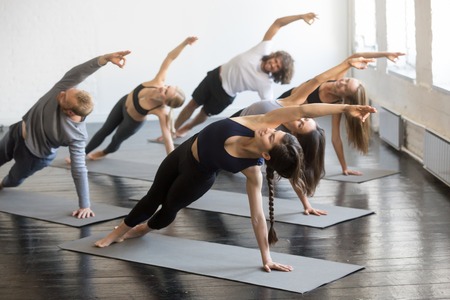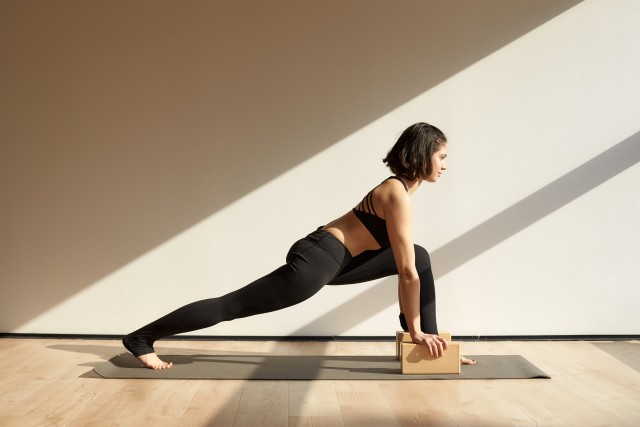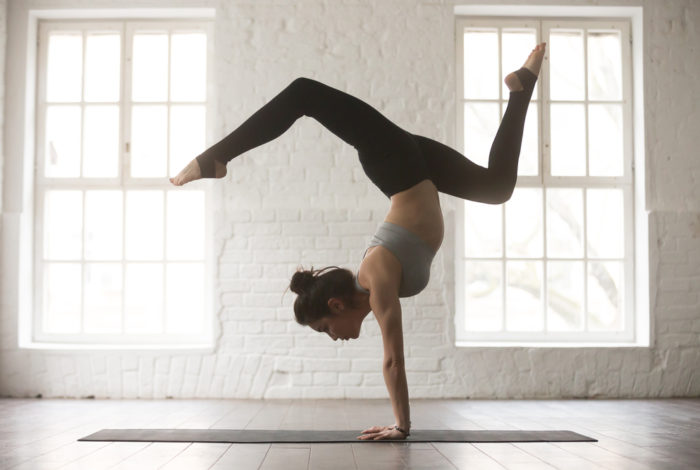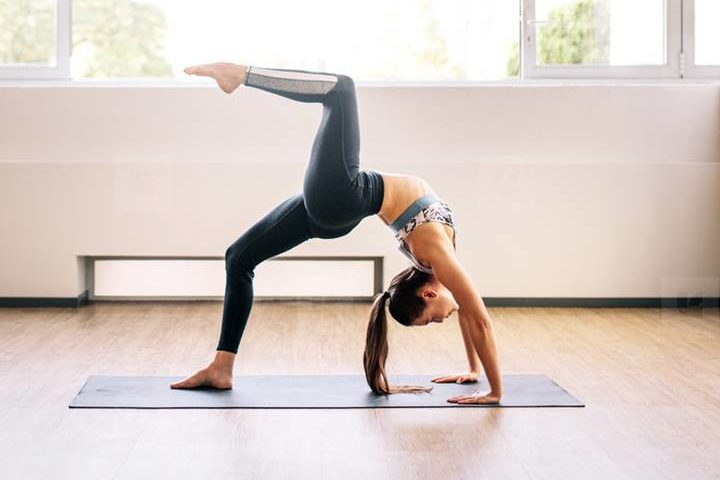If you’re looking for a practice that’s dynamic, fast-paced, and all about having fun, then you should definitely try Rocket Yoga. But what is Rocket Yoga?
Developed in the 1980s by Larry Schultz, “The Rocket” is an offshoot of the Ashtanga Vinyasa method. Similar to Ashtanga Vinyasa, it opens with sun salutations and is followed by a series of standing poses, seated poses, arm balances, and inversions.
Don’t let its name intimidate you! While Rocket is a challenging practice, it’s also known as the “Art of Modification.” The style was developed to help make Ashtanga friendlier and more accessible to all kinds of practitioners.

Here’s what you can look forward to in a Rocket Yoga class:
1. You can let loose and have fun.
In a Rocket Yoga class, instructors often encourage students to let go of the ego, release expectations, and not dwell on advanced postures.

In a Rocket class, you will definitely confront a crazy-looking arm balance and inversion. However, the goal is not to achieve those postures. Rather, the goal of each class is to simply try new things and have fun.
2. You’ll feel free and laidback.
The traditional Ashtanga series can often feel quite constricting and limiting, especially since the sequence remains fixed and not many modifications are provided. The first primary series, for example, involves a lot of binds that are often quite difficult.
Rocket teachers and practitioners are free to interpret each asana as freely as you’d like, and even add additional exercises to help complement and enrich the practice. Freedom and creativity are partly of the Rocket experience!
3. It will enrich the rest of your yoga practice.
If you’re a traditional Ashtangi or if you often practice Vinyasa Flow, consider adding Rocket Yoga to your daily practice. Because Rocket is playful and involves a lot of exciting poses, you’ll learn a lot of useful drills and techniques that you can apply to the other styles you love.

Consider adho mukha vrksasana or handstand, for example. Both appear in the Vinyasa Flow and Rocket methods. However, learning from both styles help you practice different forms of entry into the pose, muscular engagement, and so on.




